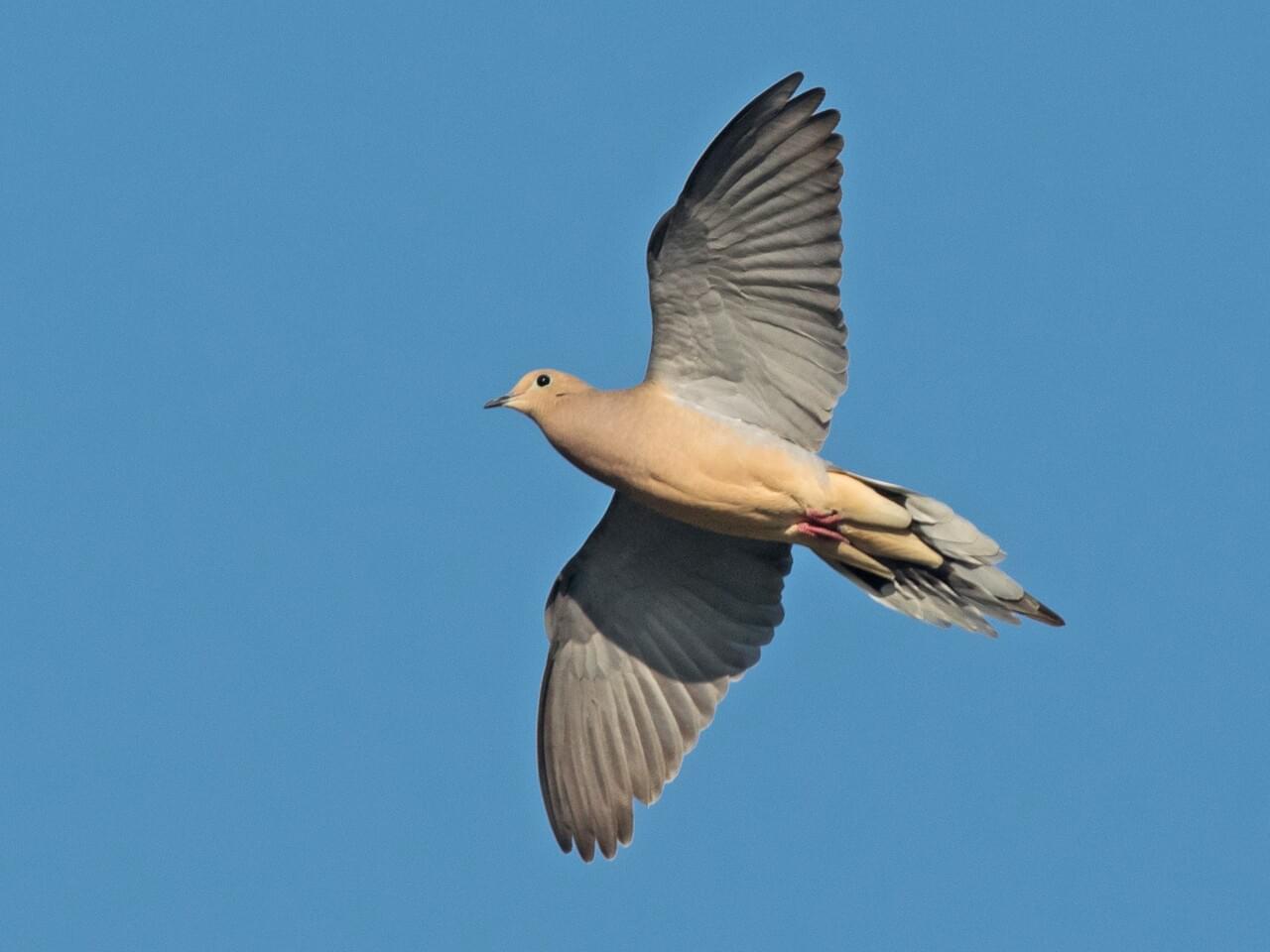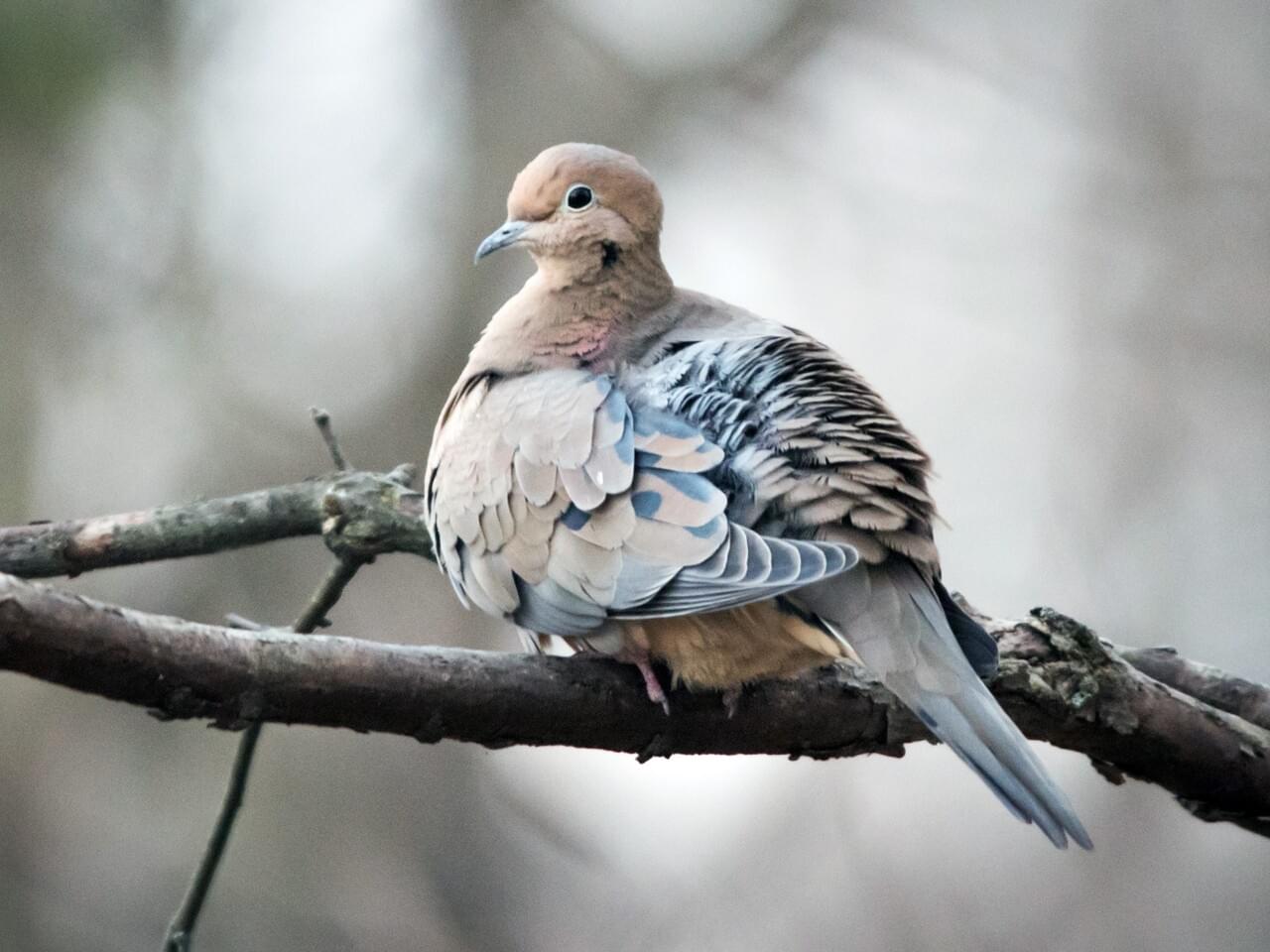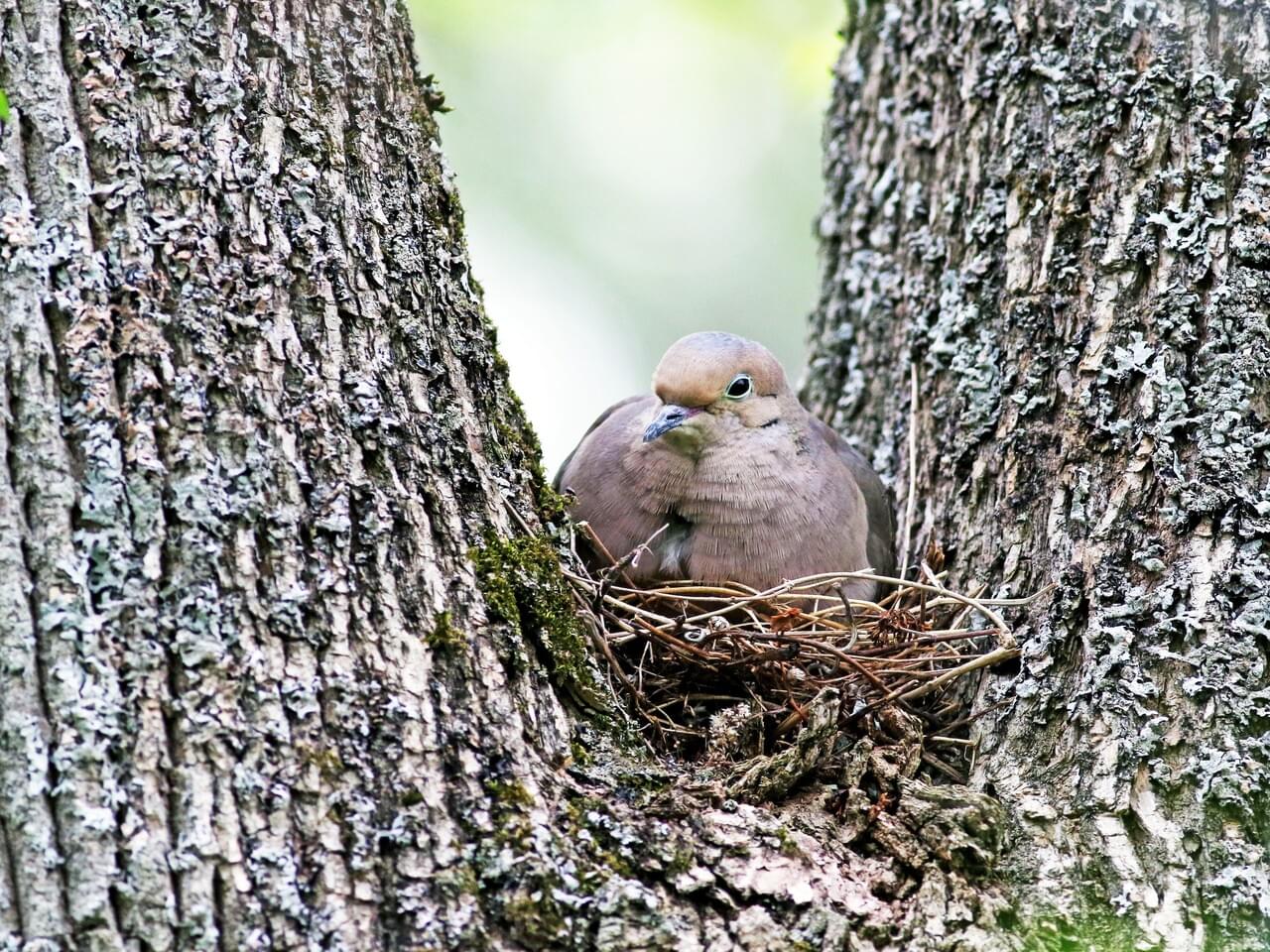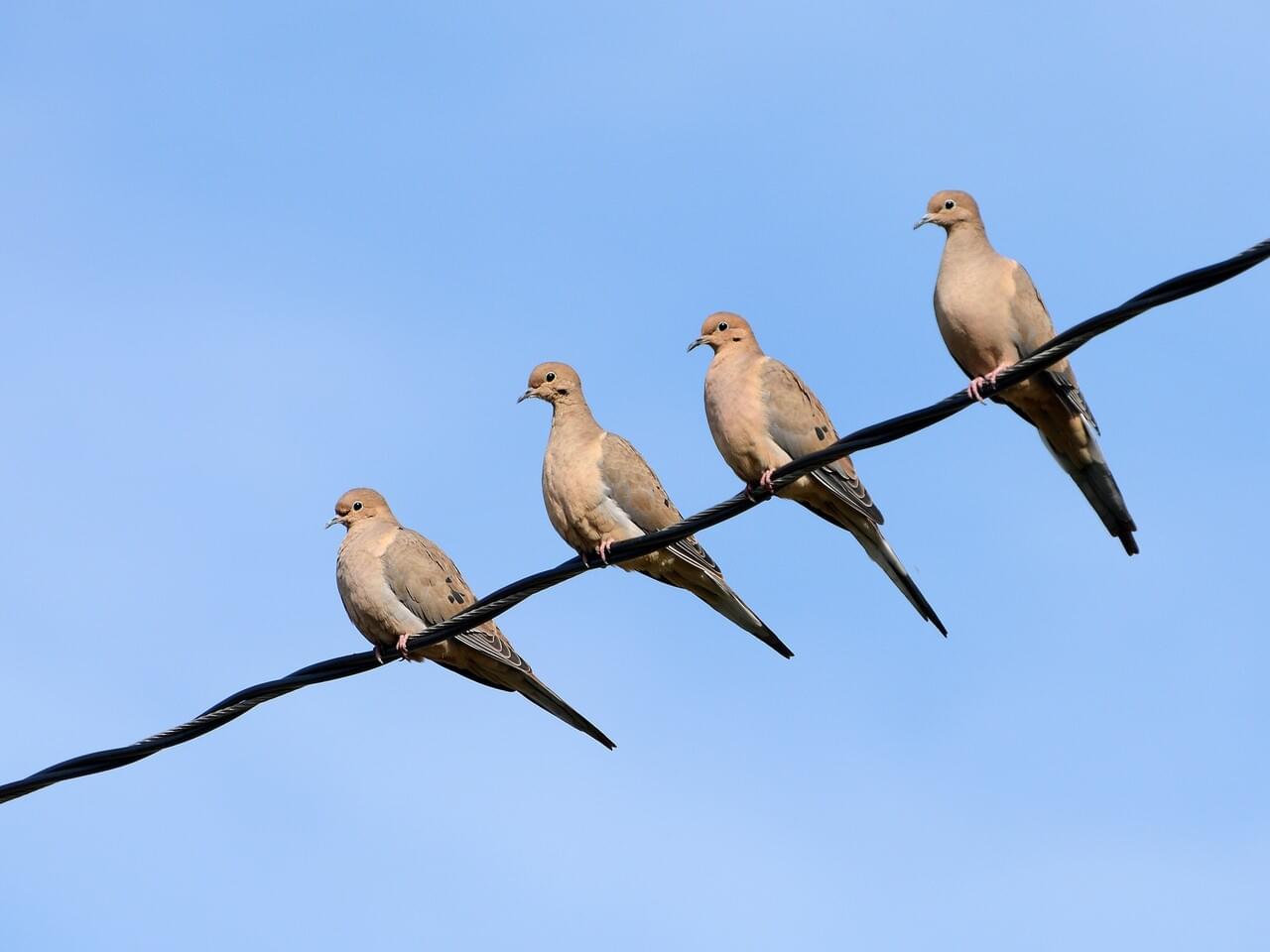 Photo ©
Liz Clayton Fuller
Photo ©
Liz Clayton Fuller
Mourning Dove
Main Focal Species
A graceful, slender-tailed, small-headed dove that’s common across the continent. Mourning Doves perch on telephone wires and forage for seeds on the ground; their flight is fast and bullet straight. Their soft, drawn-out calls sound like laments. When taking off, their wings make a sharp whistling or whinnying. Mourning Doves are the most frequently hunted species in North America.
Range

Habitat
Primarily a bird of open country, scattered trees, and woodland edges, but large numbers roost in woodlots during winter. Feeds on ground in grasslands, agricultural fields, backyards, and roadsides.
Food
Seeds make up 99 percent of a Mourning Dove’s diet, including cultivated grains and even peanuts, as well as wild grasses, weeds, herbs, and occasionally berries. They sometimes eat snails. Mourning Doves eat roughly 12 to 20 percent of their body weight per day, or 71 calories on average.
Behavior
Mourning Doves feed on the ground and in the open. They peck or push aside ground litter, but don’t scratch at the ground. Males have favorite “cooing perches” they defend from other males. Members of a pair preen each other with gentle nibbles around the neck as a pair-bonding ritual. Eventually, the pair will progress to grasping beaks and bobbing their heads up and down in unison.
Nesting
A flimsy assembly of pine needles, twigs, and grass stems, unlined and with little insulation for the young. Over 2 to 4 days, the male carries twigs to the female, passing them to her while standing on her back; the female weaves them into a nest about 8 inches across. Mourning Doves sometimes reuse their own or other species’ nests.
Appearance
Typical Sound
© Wil Hershberger | Macaulay Library
Size & Shape
Plump-bodied and long-tailed, with short legs, small bill, and a head that looks particularly small in comparison to the body. The long, pointed tail is unique among North American doves.
Color Pattern
Mourning Doves often match their open-country surroundings. They’re delicate brown to buffy-tan overall, with black spots on the wings and black-bordered white tips to the tail feathers.
Plumage Photos
Similar Species
Mourning Doves are the common small dove across most of the continent. They're smaller, longer-tailed, and much lighter colored than Rock and Band-tailed pigeons. The Mourning Dove's long, tapering tail distinguishes it from the square-tailed White-tipped, Eurasian Collared, and White-winged doves. White-winged Dove also has bright white flashes in the wings when it flies, and Eurasian Collared-Dove has a dark ring around the back of the neck rather than the Mourning Dove's cheek smudge. Inca Dove is smaller with fine black scales on its tan plumage, and bright rufous wings in flight. Recently fledged Mourning Doves have a scaly pattern similar to Inca Dove and Common Ground-Dove. Inca Dove's scales are finer and black, and the tail is long and square-tipped. Common Ground-Doves have an orange-based bill and no scaling on the back. Both these species have bright rufous patches in the wing in flight.
Did you know?!
- On hot rainy days, Mourning Doves may lean forward, hold up their wings, and fluff themselves up allowing water to get into their feathers. In a cold rain or if they don't want to get wet, they hold their heads high and flatten their feathers and the water flows off.
- Mourning Doves are hunted heavily throughout most North America, yet they remain among the 10 most abundant birds in the United States.





